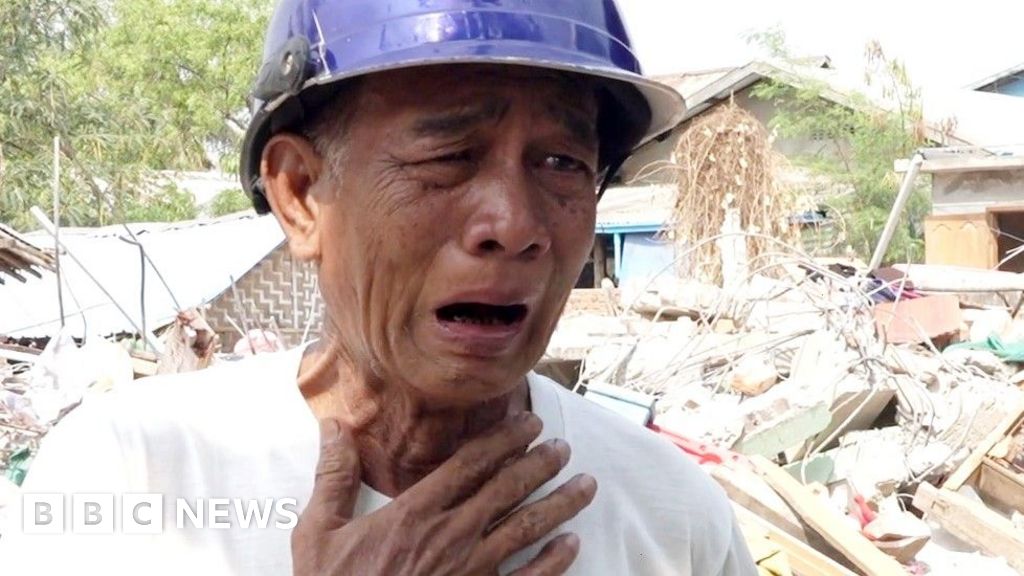
BBC Burmese
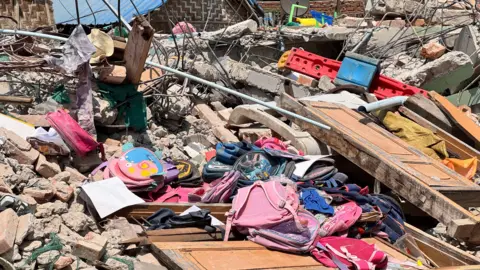 BBC
BBCAbout 15 children’s back bags are torn in the rubble – pink bags, blue and oranges where their books are poured out.
Spider-Man and the alphabet’s letters have been released between chairs, tables and garden skiings in the remnants of this before school due to the huge earthquake that fell in Myanmar on Friday.
In the town of Kyox, about 40 kilometers south of Mandala, one of the most affected areas of the 7.7 earthquakes of 7.7 people killed at least 2,000 people.
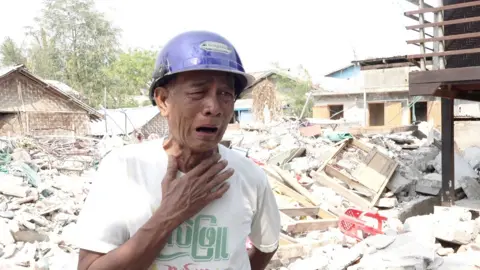
The 71-year-old Kio Niin cries when he explains that they are preparing their own family to hold the funeral of his five-year-old the hter San.
He says his mother ate lunch when the devastating earthquake began. He ran to the school, but the building had collapsed completely.
The body of the little girl was found about three hours later. “Fortunately, our beloved body was the same in one piece,” he says.

Local residents say there were about 70 children aged between two and seven years old. They learned it at the school on Friday. But now there is a little left in addition to a number of bricks, concretes and iron trees.
The school says 12 children and one teacher died, but locals believe the number is at least 40 children.
Inhabitants and parents are confused. People say the whole town came to help rescue and several US bodies were taken on Friday. They talk about mothers’ crys and call their children for a long time until night.
Now, three days later, the site is silent. People look at me with a strong sorrow.
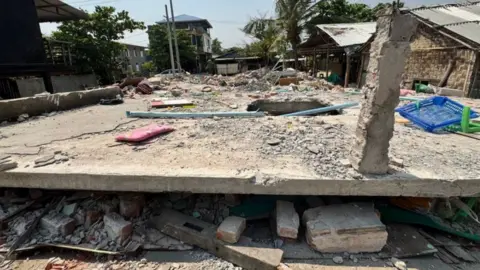
Aid groups warn of the deterioration of the humanitarian crisis in Myanmar, hospitals have been damaged and surprised, although the scale of all the destruction still emerges.
Before we reached Kiox, we were in the capital.
The worst area we saw was a building that was a residential place for public employees. All the ground floor of the ground had collapsed, and three ups were still on it.
There were traces of blood in the rubble. The dense smell that many people died there, but there was no sign of rescue work.
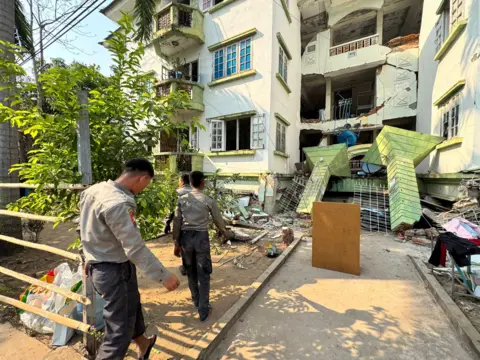
A group of policemen were holding furniture and household items in trucks, and they seemed to try to rescue things that can still be used.
We would not have interviewed the police officer, although we were allowed to make films for a while.
We could see people who were giving them mourning and destruction, but they didn’t want to talk to the media for fear of revenge on the military government.
We stayed with that large number of questions. How many people were under the rubble? Can none of them be still alive? Why wasn’t there any rescue work, even to recover the bodies of the dead?
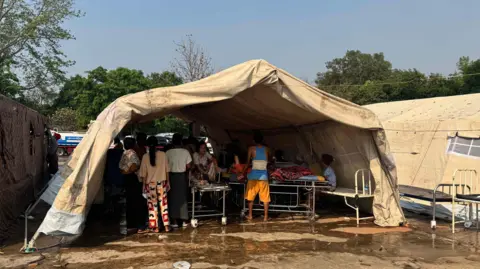
Only 10 minutes away from him, we had visited the largest hospital in the capital – known as the “1000-bed hospital.
The ceiling of the emergency room was collapsed. At the entrance gate, a painting written on it “Emergency Section” in English on the ground.
There were six military trucks and several tents abroad, where patients were evacuated at the hospital.
The tents were sprayed with water to get some of them get rid of severe heat inside.
There seemed to be about 200 injured there, some of whom had bloody heads, while others were broken organs.
I saw that he had officially rebuked his staff for other colleagues who did not work during the emergency work.
I understood that the man was the health minister, Dr. Tet Khayng climbed, and called him for an interview, but he briefly rejected my request.
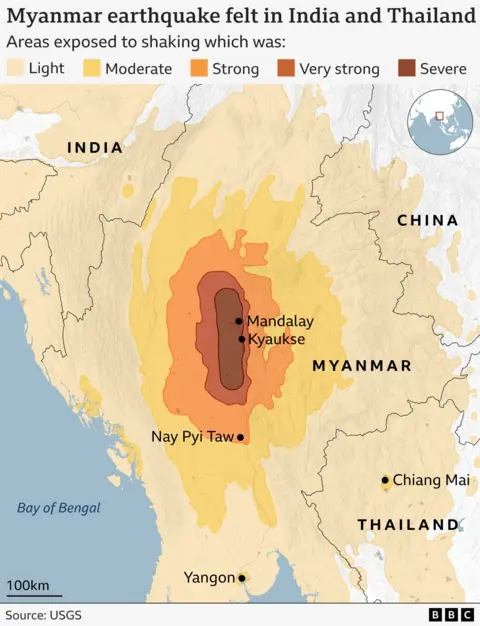
On the road in the city, people were sitting under the trees on the deprived lands of the road center, trying to get some of the hot sun.
The hottest time in the year – must have been close to 40C – but they were afraid to be inside the buildings due to the continuity of the background.
We traveled to the earthquake area about 600 km south of Mandala at 4 am on Sunday. The road was black, there were no street lights.
After more than three hours of driving, we saw a team with about 20 rescue workers in orange clothes, with a logo on their clothes that show that they came from Hong Kong. We started finding cracks on the roads when we were driving north.
The road usually has several checkpoints, but we had traveled 185 kilometers (115 miles) before we saw one of them. A single police officer told us that the front road was closed due to the breakdown of a bridge, and showed a support.
We hoped to reach Mandala, My second largest city, by Sunday night.
But our support, and the problems of our car in the heat made it impossible.
The day later, we finally arrived at the city. It is in a complete darkness, no lights on the street and houses without electricity or running water.
We are anxious about what we find here when it comes in the morning.
